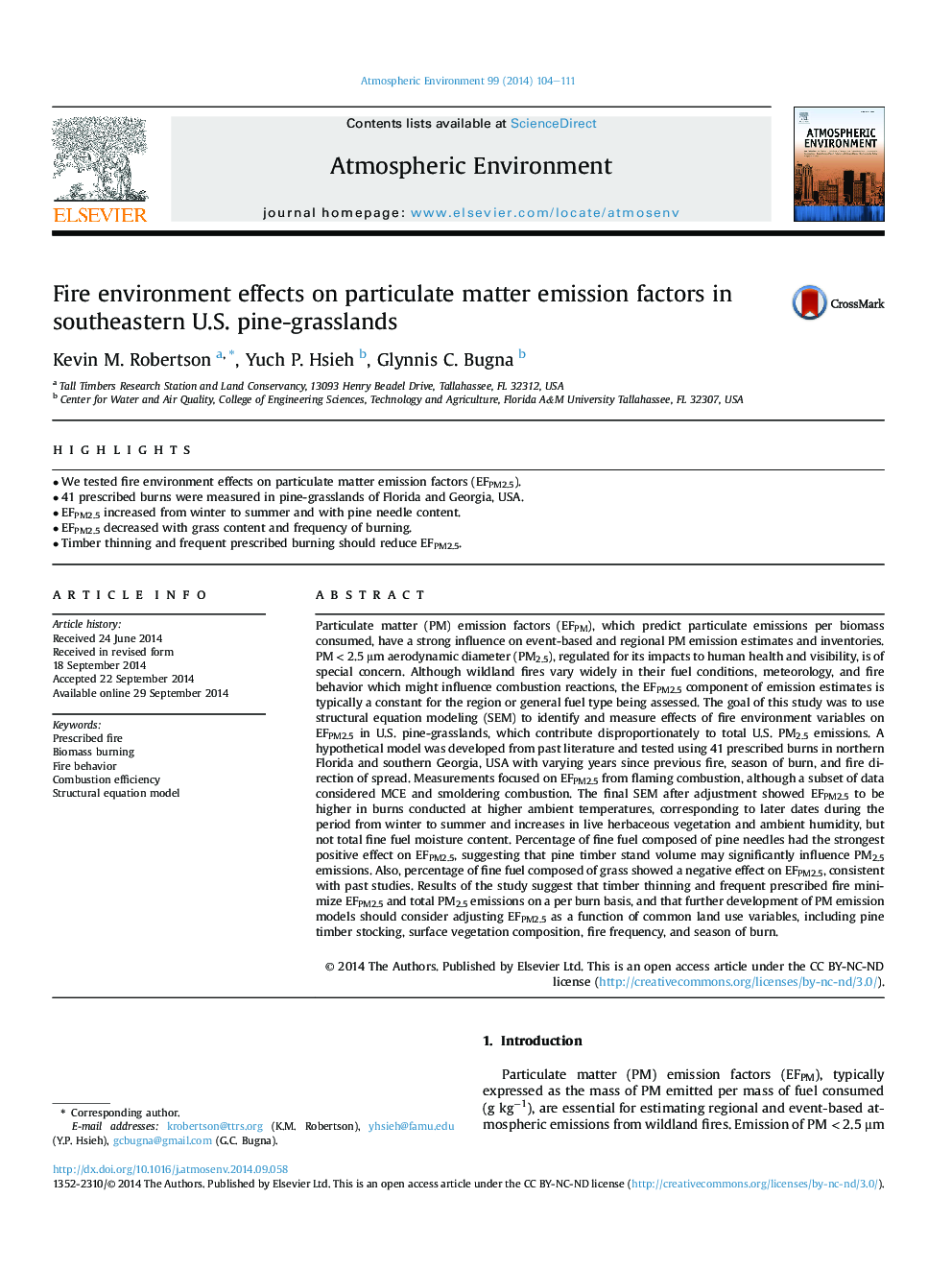| کد مقاله | کد نشریه | سال انتشار | مقاله انگلیسی | نسخه تمام متن |
|---|---|---|---|---|
| 6339104 | 1620372 | 2014 | 8 صفحه PDF | دانلود رایگان |
عنوان انگلیسی مقاله ISI
Fire environment effects on particulate matter emission factors in southeastern U.S. pine-grasslands
ترجمه فارسی عنوان
اثرات آتش سوزی بر عوامل انتشار ذرات معلق در ماسه های خاوری جنوب شرقی ایالات متحده است
دانلود مقاله + سفارش ترجمه
دانلود مقاله ISI انگلیسی
رایگان برای ایرانیان
کلمات کلیدی
آتش اعلام شده، سوختن زیست توده، رفتار آتش، راندمان احتراق، مدل معادلات ساختاری،
موضوعات مرتبط
مهندسی و علوم پایه
علوم زمین و سیارات
علم هواشناسی
چکیده انگلیسی
Particulate matter (PM) emission factors (EFPM), which predict particulate emissions per biomass consumed, have a strong influence on event-based and regional PM emission estimates and inventories. PM < 2.5 μm aerodynamic diameter (PM2.5), regulated for its impacts to human health and visibility, is of special concern. Although wildland fires vary widely in their fuel conditions, meteorology, and fire behavior which might influence combustion reactions, the EFPM2.5 component of emission estimates is typically a constant for the region or general fuel type being assessed. The goal of this study was to use structural equation modeling (SEM) to identify and measure effects of fire environment variables on EFPM2.5 in U.S. pine-grasslands, which contribute disproportionately to total U.S. PM2.5 emissions. A hypothetical model was developed from past literature and tested using 41 prescribed burns in northern Florida and southern Georgia, USA with varying years since previous fire, season of burn, and fire direction of spread. Measurements focused on EFPM2.5 from flaming combustion, although a subset of data considered MCE and smoldering combustion. The final SEM after adjustment showed EFPM2.5 to be higher in burns conducted at higher ambient temperatures, corresponding to later dates during the period from winter to summer and increases in live herbaceous vegetation and ambient humidity, but not total fine fuel moisture content. Percentage of fine fuel composed of pine needles had the strongest positive effect on EFPM2.5, suggesting that pine timber stand volume may significantly influence PM2.5 emissions. Also, percentage of fine fuel composed of grass showed a negative effect on EFPM2.5, consistent with past studies. Results of the study suggest that timber thinning and frequent prescribed fire minimize EFPM2.5 and total PM2.5 emissions on a per burn basis, and that further development of PM emission models should consider adjusting EFPM2.5 as a function of common land use variables, including pine timber stocking, surface vegetation composition, fire frequency, and season of burn.
ناشر
Database: Elsevier - ScienceDirect (ساینس دایرکت)
Journal: Atmospheric Environment - Volume 99, December 2014, Pages 104-111
Journal: Atmospheric Environment - Volume 99, December 2014, Pages 104-111
نویسندگان
Kevin M. Robertson, Yuch P. Hsieh, Glynnis C. Bugna,
